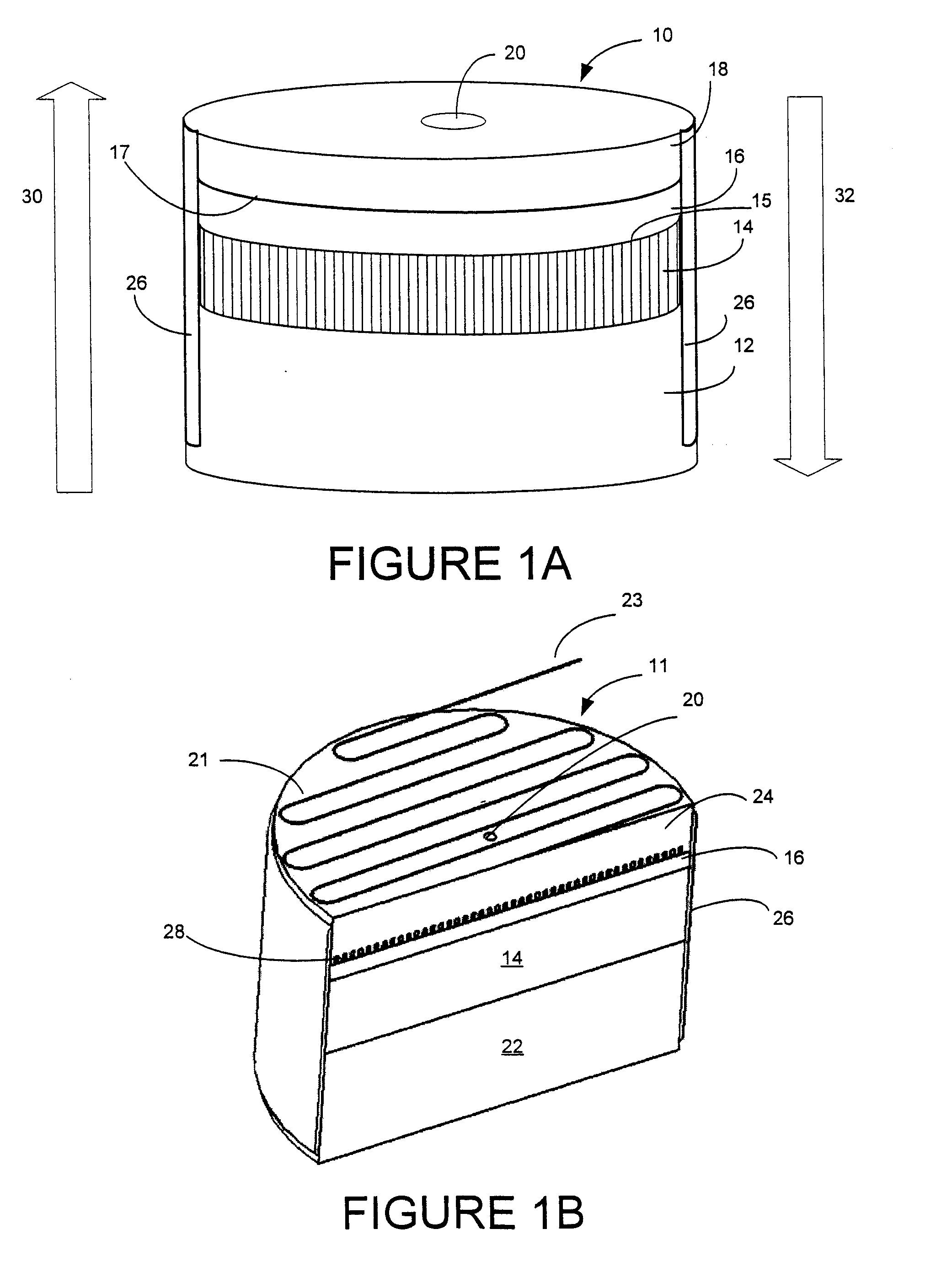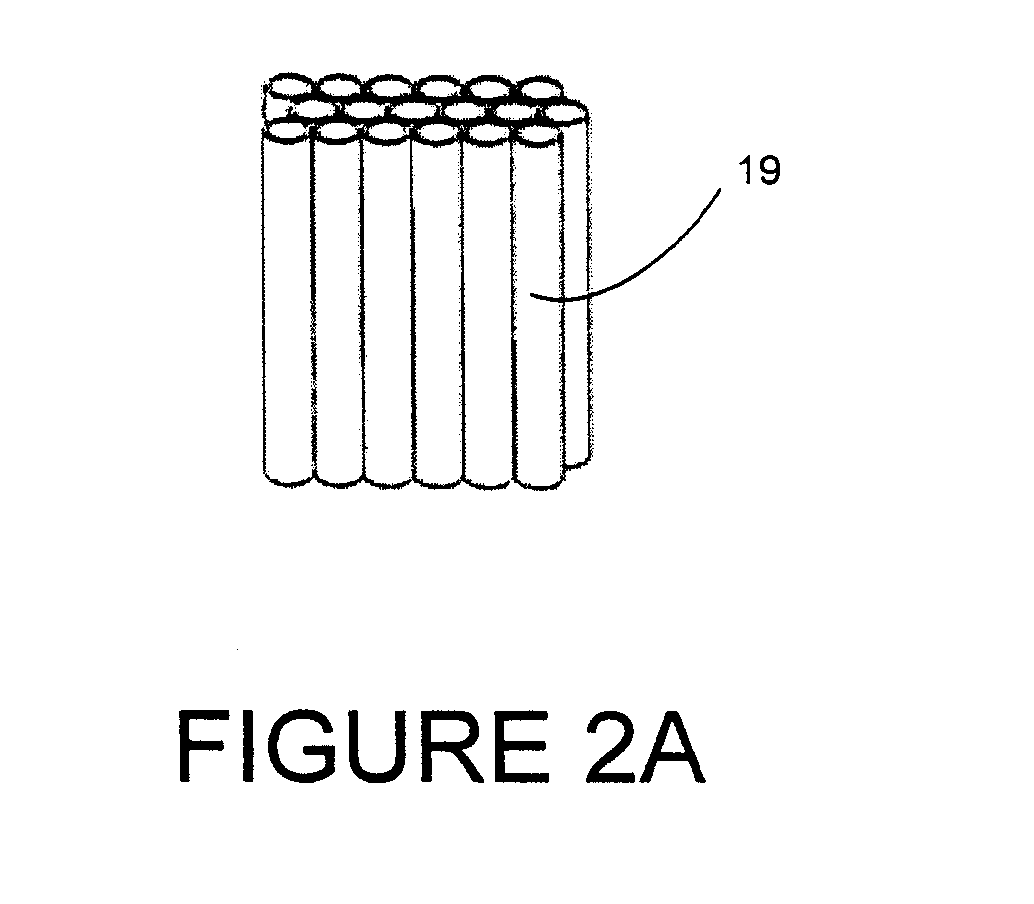Capillary Pumps for Vaporization of Liquids
a liquid vaporization and capillary pump technology, applied in the field of liquid vaporization, can solve the problems of high cost of valves, inconvenient use of pressurized liquid sources, and heavy transpor
- Summary
- Abstract
- Description
- Claims
- Application Information
AI Technical Summary
Benefits of technology
Problems solved by technology
Method used
Image
Examples
example
[0155]Numerous capillary pumps have been constructed, operated and tested. Capillary pumps having similar configurations but different sizes and vapor output properties are described below. Capillary pumps were assembled in a stacked disk configuration, in sizes having 5 mm, 13 mm and 19 mm diameters. Each of the capillary pumps had an aspect ratio (diameter to height) of about 1.
[0156]Each of the capillary pumps tested comprised a vaporizer component, an insulator component, and an orifice disk. The vaporizer components were all constructed from porous alumina (Al2O3) having a purity >96%, minimum bubble pressure (lowest pressure for steady flow of bubbles using isopropyl alcohol) of 10 psi; minimum air permeability of 0.03×10−12 m2; maximum thermal conductivity of 1.5 W / m-° K; coefficient of thermal expansion of 7−9×10−6 / ° C.; and minimum strength (TRS) of 4 MPa.
[0157]The insulator components were all constructed from porous alumina-based material having a minimum permeability (ai...
PUM
| Property | Measurement | Unit |
|---|---|---|
| pore size | aaaaa | aaaaa |
| pore sizes | aaaaa | aaaaa |
| pore sizes | aaaaa | aaaaa |
Abstract
Description
Claims
Application Information
 Login to View More
Login to View More - R&D
- Intellectual Property
- Life Sciences
- Materials
- Tech Scout
- Unparalleled Data Quality
- Higher Quality Content
- 60% Fewer Hallucinations
Browse by: Latest US Patents, China's latest patents, Technical Efficacy Thesaurus, Application Domain, Technology Topic, Popular Technical Reports.
© 2025 PatSnap. All rights reserved.Legal|Privacy policy|Modern Slavery Act Transparency Statement|Sitemap|About US| Contact US: help@patsnap.com



